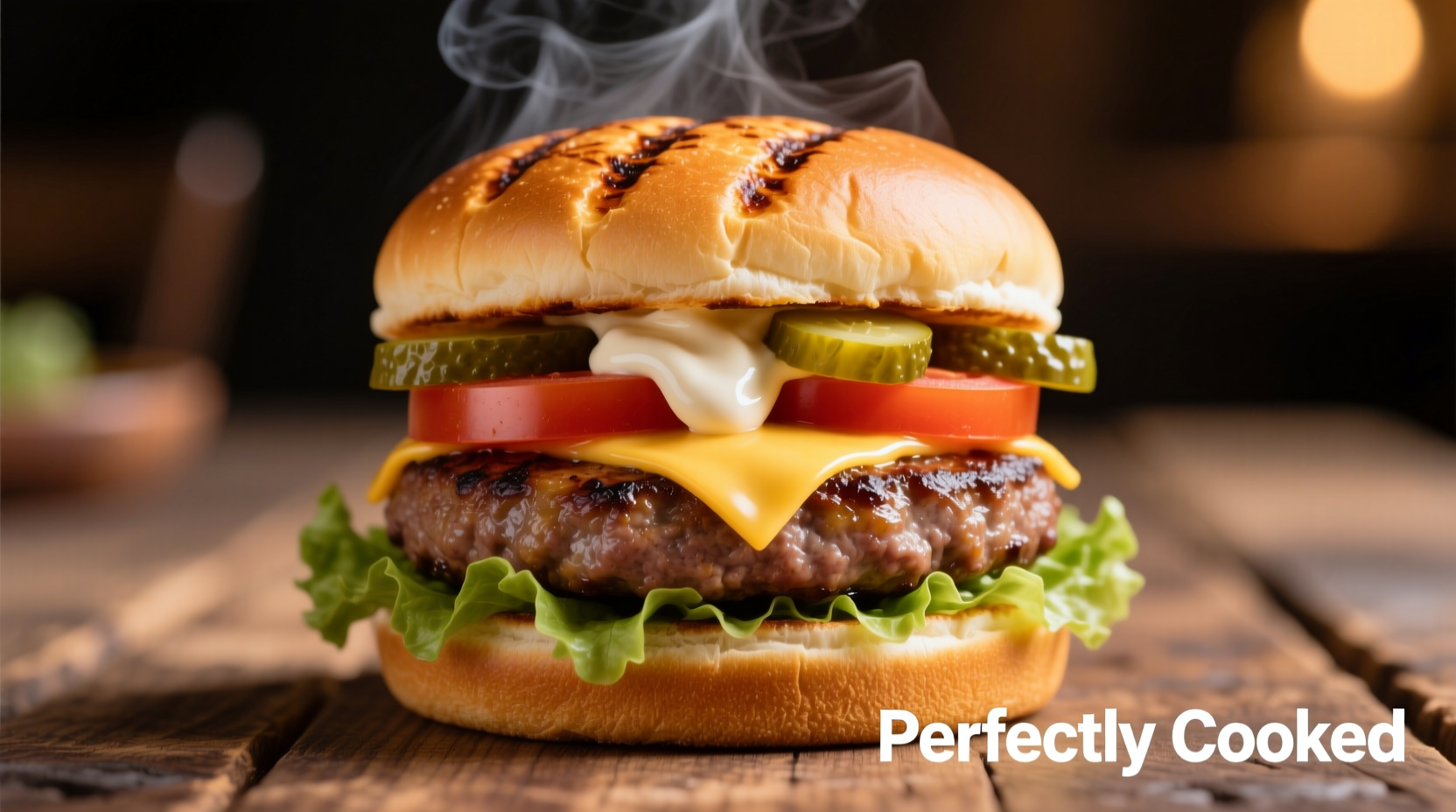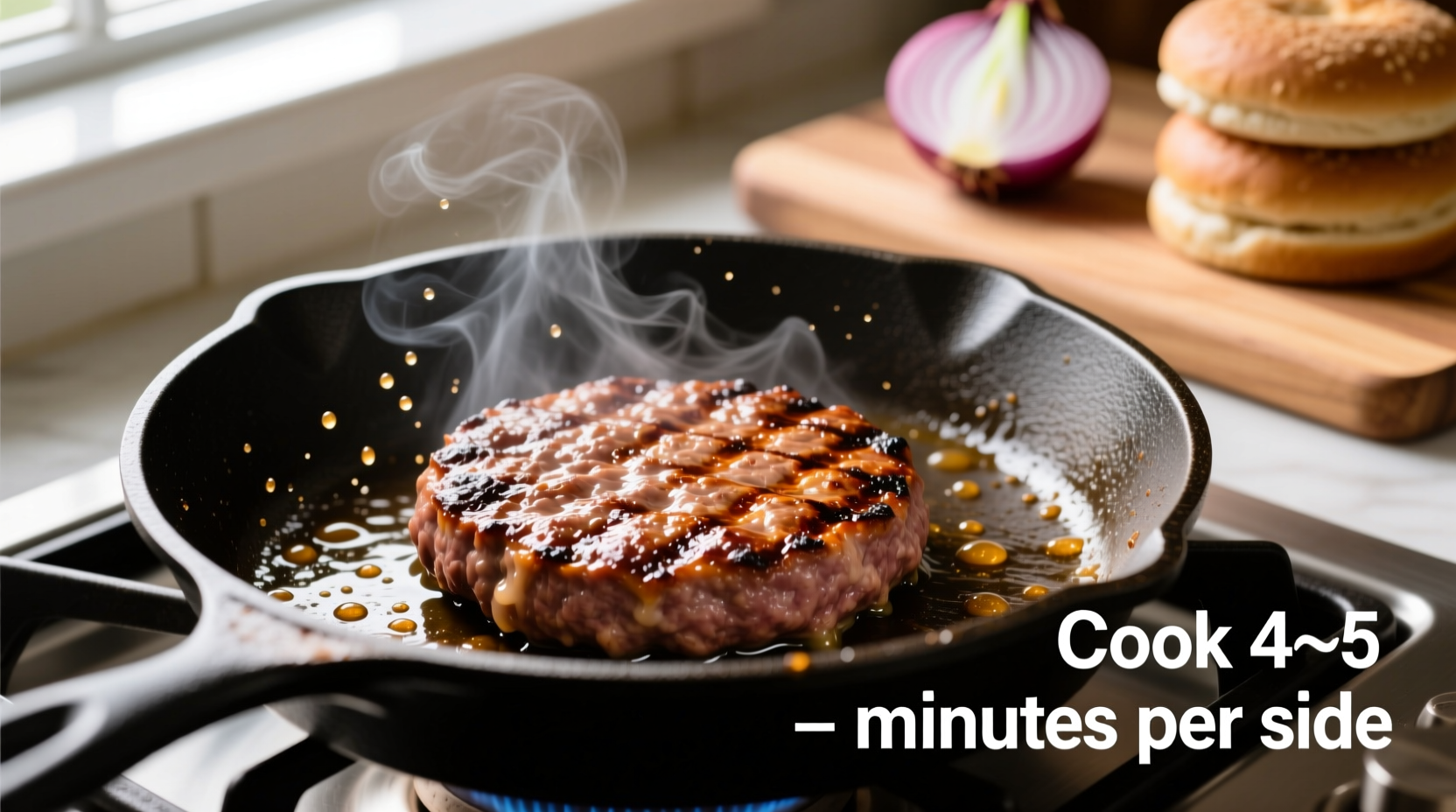You can safely cook a frozen hamburger patty without thawing it first by using proper cooking methods that ensure it reaches 160°F internal temperature. The best techniques include stovetop cooking (12-15 minutes), oven baking (20-25 minutes), or grilling (15-18 minutes), with frequent flipping to promote even cooking and prevent uneven browning.
The Complete Guide to Perfect Frozen Hamburger Patties
Many home cooks wonder whether they can skip the thawing step when making burgers. The good news is you can safely cook frozen hamburger patties with excellent results when you follow proper techniques. This guide provides professional methods backed by food safety standards to help you create juicy, flavorful burgers straight from the freezer.
Why Cooking Frozen Patties Right Matters
Cooking frozen hamburger patties improperly leads to dry exteriors with raw centers—a food safety hazard. The USDA Food Safety and Inspection Service emphasizes that ground beef must reach 160°F internally to eliminate harmful bacteria like E. coli. When you cook frozen patties correctly, you achieve both safety and optimal texture.
Quick Reference Cooking Guide
| Cooking Method | Temperature Setting | Approximate Time | Flipping Frequency |
|---|---|---|---|
| Stovetop | Medium-high heat | 12-15 minutes | Every 3-4 minutes |
| Oven | 400°F (204°C) | 20-25 minutes | Halfway through |
| Grill | Medium heat | 15-18 minutes | Every 4-5 minutes |
Stovetop Method: The Most Reliable Approach
Cooking frozen hamburger patties on the stovetop gives you the most control over the cooking process. Professional chefs prefer this method for consistent results:
- Remove patties from packaging and separate any that are stuck together
- Preheat cast-iron or stainless steel skillet over medium-high heat for 3-4 minutes
- Add patties without oil (frozen meat releases fat as it cooks)
- Cook covered for first 4 minutes to help heat penetrate
- Flip every 3-4 minutes, pressing lightly with spatula to maintain contact
- Check internal temperature with instant-read thermometer at 10 minutes
- Continue cooking until thermometer reads 160°F in thickest part
- Rest patties for 3 minutes before serving
This method prevents the common mistake of high-heat searing that creates a crust while leaving the center frozen. The USDA Meat and Poultry Hotline confirms that cooking frozen ground beef requires approximately 50% more time than thawed patties.
Oven Baking: Hands-Off Cooking Option
When you need to cook multiple frozen hamburger patties simultaneously:
- Preheat oven to 400°F (204°C) with rack in center position
- Place patties on wire rack over baking sheet (promotes air circulation)
- Cook for 10 minutes, then flip and continue for another 10-15 minutes
- Verify 160°F internal temperature before removing
The FDA Food Code specifies that proper cooking temperatures must be maintained throughout the entire cooking process to prevent bacterial growth. Oven cooking provides more even heat distribution than microwave methods, which often create unevenly cooked patties.
Grilling Frozen Patties: Outdoor Cooking Tips
Grilling frozen hamburger patties requires careful temperature management:
- Create two-zone fire with medium heat (350-375°F)
- Start patties over indirect heat for first 5-7 minutes
- Move to direct heat for final searing and grill marks
- Maintain closed lid to create oven-like environment
- Use thermometer to verify doneness (never rely on color alone)
According to the National Restaurant Association's ServSafe guidelines, ground beef must reach 160°F regardless of cooking method. Many home cooks mistakenly believe burgers are done when they're no longer pink, but food safety depends on temperature, not color.
Critical Food Safety Timeline
Understanding the cooking timeline prevents dangerous undercooking:
- 0-4 minutes: Surface begins to thaw and brown; interior remains frozen
- 5-8 minutes: Heat penetrates to center; patties release significant moisture
- 9-12 minutes: Internal temperature rises rapidly toward target
- 13+ minutes: Final cooking phase to reach 160°F throughout
The USDA recommends using a food thermometer rather than visual cues to determine doneness. Ground beef can appear brown before reaching safe temperatures, creating a false sense of security.

Flavor Enhancement Techniques
While frozen patties lack the texture control of fresh ground beef, you can maximize flavor:
- Add seasoning after initial sear to prevent moisture loss
- Create a slight dimple in center before cooking to prevent bulging
- Use cheese during last 2 minutes to help retain moisture
- Rest patties 3 minutes before serving for juicier results
- Toast buns on cooler part of grill while patties rest
Common Mistakes to Avoid
These errors compromise both safety and quality when cooking frozen hamburger patties:
- Pressing too hard: Squeezes out juices, creating dry burgers
- Flipping too frequently: Prevents proper sear formation
- Cooking on high heat: Burns exterior while center remains frozen
- Not using a thermometer: Leads to undercooked or overcooked patties
- Skipping the rest period: Causes juices to run out when cut
Food safety experts from institutions like the University of Minnesota Extension emphasize that proper cooking technique matters more than whether meat starts frozen or thawed. The critical factor is achieving and verifying the proper internal temperature throughout the patty.
When Thawing Might Be Preferable
While you can safely cook from frozen, thawing offers advantages in specific situations:
- When adding delicate ingredients like blue cheese that melt too quickly
- For thicker patties (over 3/4 inch) where heat penetration becomes challenging
- When precise control over doneness is critical (like medium-rare for non-ground beef)
Always thaw in refrigerator (never at room temperature) and cook within 1-2 days for best results. The FDA recommends against thawing meat in warm water or on kitchen counters due to rapid bacterial growth in the temperature danger zone (40°F-140°F).
Conclusion: Safe and Delicious Results Every Time
Cooking frozen hamburger patties properly requires slightly longer cooking times and careful temperature monitoring, but delivers safe, satisfying results. By following these professional techniques and prioritizing food safety, you'll create burgers that rival those made from fresh ground beef. Remember that thermometer verification is non-negotiable for food safety—your family's health depends on it.











 浙公网安备
33010002000092号
浙公网安备
33010002000092号 浙B2-20120091-4
浙B2-20120091-4